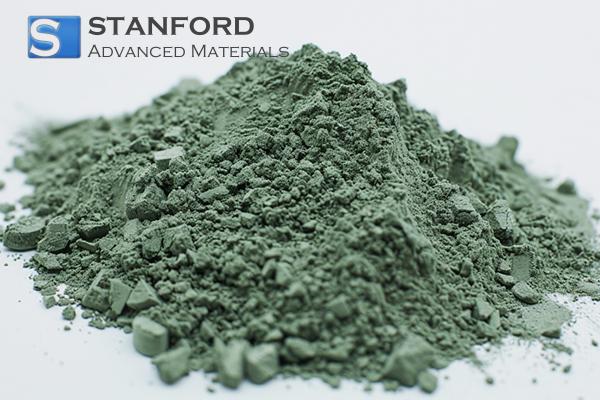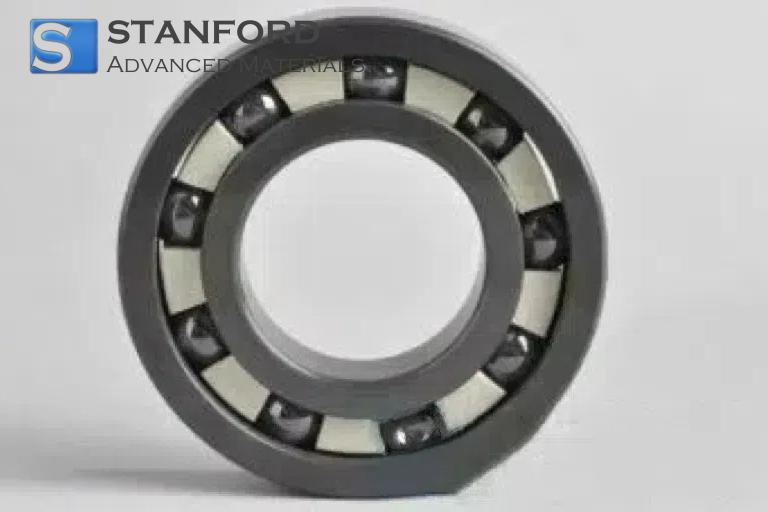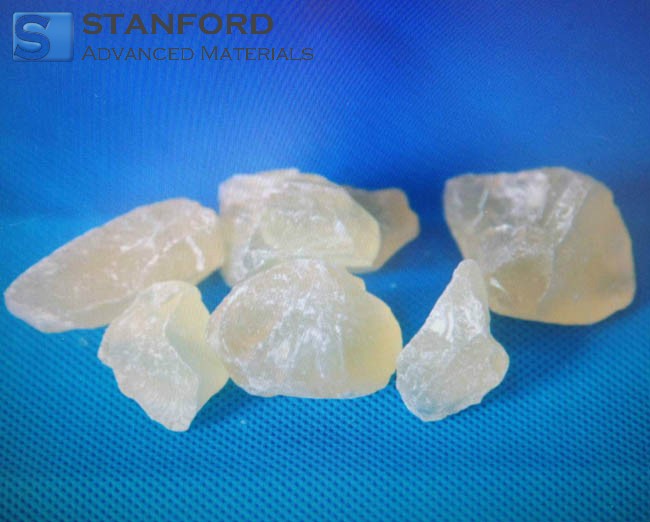Sintered Silicon Carbide Ring (SSiC) Description
Sintered Silicon Carbide Ring (SSiC) is a lightweight product with high hardness and strength comparable to diamond. All components are held together by a snap ring in a unit construction and can be repaired easily on-site. It has features of excellent corrosion resistance, high coefficient of heat conductivity, self-lubricity, low density, and high hardness. The fine particles α-SiC and additives are processed to form granulation powder and then pressed into blank. Through the control of the sintering temperature, the α-SiC crystal is grown in a vacuum sintering furnace at 2100℃ to form a high-purity and high-density silicon carbide material.
Sintered Silicon Carbide Ring (SSiC) Specifications
Specification
|
Properties
|
Unit
|
SSiC
|
|
Purity
|
%
|
≥98
|
|
Density
|
g/cm3
|
3.1
|
|
Shore Hardness
|
HS
|
120-130
|
|
Elastic Modulus
|
MPa
|
4.10x105
|
|
Poisson Ratio
|
|
0.16
|
|
Tensile Strength
|
MPa
|
2.8x102
|
|
Bending Strength
|
MPa
|
4.9x102
|
|
Compression Strength
|
MPa
|
3.0x102
|
|
Thermal Conductivity
|
W/m.k
|
147
|
|
Coefficient of Thermal Expansion
|
l/ºC
|
4.0x10-6
|
|
Heat Resistance
|
|
165 CTC
|
|
Thermal Impact Coefficient
|
cal/cm.sec
|
200
|
|
Tolerance
|
mm
|
-0.02 -- +0.02
|
Sintered Silicon Carbide Ring (SSiC) Applications
Mechanical Seals: SiC rings are commonly used as mating rings for pumps, compressors, and mixers in mechanical seals. They provide a reliable sealing surface that can withstand high pressures and temperatures and abrasive and corrosive media.
2. Bearings: SiC rings are used in bearing applications, particularly in environments where high wear resistance and low friction are required. This includes applications in pumps, turbines, and other rotating machinery.
3. Wear Parts: SiC rings are employed as wear-resistant parts in various industrial applications, such as nozzles, valves, and sandblasting equipment. Their ability to resist abrasion and erosion makes them ideal for these demanding conditions.
4. Automotive Industry: In automotive applications, SiC rings are used in components such as water pump seals, fuel pump seals, and turbocharger bearings. They help improve the longevity and performance of these components under harsh operating conditions.
5. Chemical Processing: SiC rings are used in chemical processing equipment, including reactors, mixers, and agitators. Their chemical resistance ensures they can withstand aggressive chemicals and solvents without degrading.
6. Aerospace: SiC rings are used in aerospace applications for components that require high strength, low weight, and thermal stability. This includes bearings and seals in jet engines and other high-performance systems.
7. Semiconductor Manufacturing: SiC rings are utilized in semiconductor wafer processing equipment due to their purity, wear resistance, and ability to withstand high temperatures. They help maintain the integrity of the manufacturing process and improve the quality of the end product.
8. Power Generation: In power generation, SiC rings are used in turbines and other high-temperature, high-pressure equipment. They help ensure reliable operation and reduce maintenance costs by providing durable, long-lasting components.
9. Medical Equipment: SiC rings are used in medical devices that require high wear resistance, chemical inertness, and the ability to withstand sterilization processes. This includes components in pumps, mixers, and other fluid-handling systems.
Sintered Silicon Carbide Ring (SSiC) Packaging
Our Sintered Silicon Carbide Rings (SSiC) are carefully handled during storage and transportation to preserve the quality of our product in its original condition.
Sintered Silicon Carbide Ring (SSiC) FAQs
Q1: How are sintered silicon carbide rings produced?
A: Sintered silicon carbide rings are produced by pressing silicon carbide powder into a ring shape and then heating it in a sintering furnace. The process may involve pressureless sintering, hot pressing, or hot isostatic pressing to achieve the desired density and mechanical properties.
Q2: What are the advantages of sintered silicon carbide rings compared to rings made from other materials?
A: Sintered silicon carbide rings offer superior wear resistance, lower thermal expansion, higher thermal conductivity, and better chemical resistance compared to rings made from materials such as tungsten carbide, alumina, or graphite.
Q3: How is the quality of sintered silicon carbide rings verified?
A: Quality is verified using techniques such as scanning electron microscopy (SEM) for microstructure analysis, mechanical testing for strength and hardness, and thermal conductivity measurements. Dimensional accuracy and surface finish are also inspected.










